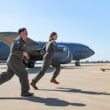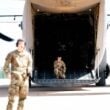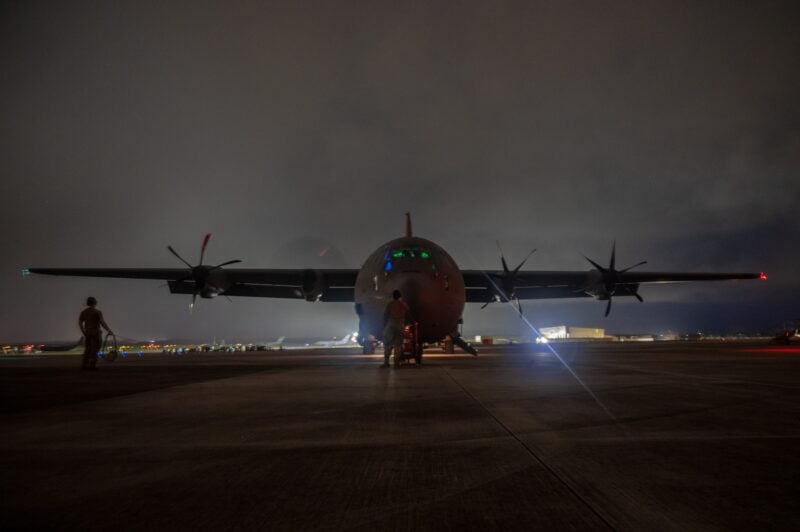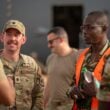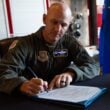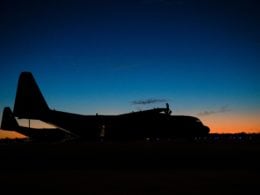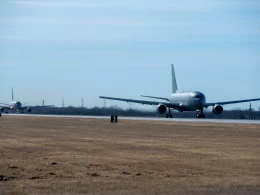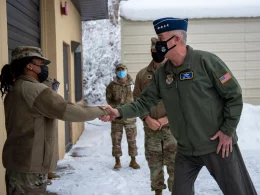SCOTT AIR FORCE BASE, Ill. —
Over 300 planners from seven nations, four services, and across multiple commands, came together last week for a Combined Mid-Planning Conference co-sponsored by Headquarters Air Force and United States Transportation Command, Sept 30-Oct 4 at Scott AFB, Illinois.
The 5-day planning event focused on operational-level planning, integration, interoperability, Joint movement, maneuver, and sustainment, and aligned a host of supporting functions for Air Mobility Command’s Exercise Mobility Guardian 25, as part of USTRANSCOM’s Ultimate Distribution 25, and aligned with Pacific Air Forces’ inaugural Resolute Force Pacific and the Department of the Air Force exercise planned to execute next summer in the Pacific.
The combined planning conference was also an opportunity to consolidate, prioritize, and understand desired training objectives across the various exercises scheduled to execute simultaneously in the region, including MG25, REFORPAC and several others.
This new Department-Level Exercise series provides a unique training opportunity for the United States and participating nations to exercise distributed operations and showcase the ability to deliver credible combat air and space power at speed and scale across the Pacific.
Lt. Gen. Jered Helwig, USTRANSCOM Deputy Commander, and Maj. Gen. Gerald Donohue, AMC Operations, Strategic Deterrence and Nuclear Integration director welcomed participants to the planning event.
Donohue referred to next summer’s exercise campaign as a “family of nested exercises.”
“People traveled far and wide for this conference to work through a variety of challenges to ensure we build capacity for effect,” Donohue stated. “This exercise has grown from a singular, service-level exercise to what it is now – a combined, joint effort, and we couldn’t do it without the broad participation in the room.”
Helwig encouraged the crowd to take lessons learned from Mobility Guardian 23 and continue to build to achieve an increased level of joint integration and interoperability among allies and partners.
“We’ve been given a rare opportunity to train a warfighting function (logistics and sustainment) traditionally seen as the administrative piece,” Helwig stated. The general outlined that the exercise is intended to answer a question, “How do we synchronize in a meaningful way for our joint service and Allies and Partners?”
With synchronization on the mind, participants broke into multiple working groups to tackle various problem sets and discuss topics ranging from command relationships, aeromedical evacuation, basing and bed down locations, to everything in the scope of flying, fixing, and supporting at an expanded scale.
“This is the first large-scale international exercise planning conference I’ve been involved in, so it’s been a real pleasure to come down here and work with the United States and the other allied nations and partners,” said Lt Justin Vandenberghe, a Public Affairs Officer for the Canadian Joint Operations Command in Ottawa, Ontario, Canada. “It has been very complex in terms of understanding all the moving parts that are going into the combined exercises, not just Mobility Guardian. It’s a really good experience seeing how we can come together and work on complex problem sets and come to understand how we’re going to execute this mission during the exercise.”
The conference was also a first for Senior Airman Jisselle Metzdorf, Air Combat Command logistics planner.
She said she was grateful for the opportunity to show what mobility provides to the joint force and to learn from her mistakes and be an example for her peers.
“The way I see it, logistics planners are part of a bigger mission,” she said. “Airmen in my career field are really scared to make mistakes because if they make mistakes, the whole mission could fail… but my takeaway from this [conference] is that’s how you learn and grow. I feel like the experiences I’ve had really pushed me to this vision of myself that I need to have to ensure my wingmen are being cared for.”
As a logistics planner, Metzdorf and her counterparts were focused on building a consolidated operational approach to enable agile logistics and maneuver under contested conditions.
C-17s from the Air National Guard are among the aircraft that plan to test their ability to demonstrate logistics architecture in the region in concert with allies and partners.
Lt. Col. Shane O’Neill, ANG lead C-17 planner and Total Force partner, explained how the Guard mentality and construct continues to change to meet the demands of the current operating environment.
“The Air National Guard is being utilized much more than 10-15 years ago, and not just for backfill to supplement when active duty gets deployed. Now we are completely integrating with active-duty units and doing things just like any other unit would,” O’Neill said.
The conference ended with an out brief to USINDOPACOM, USTRANSCOM, HAF, PACAF, and AMC senior leaders who thanked the planners for their dedication and collective effort toward ensuring the DAF remains a trusted and credible partner in the Indo-Pacific region.
Lt. Gen. Rebecca Sonkiss, AMC deputy commander, expressed excitement and concurrence on the way ahead.
“This is exactly where we need to be. We must maneuver the joint force, our Allies and Partners, and all those who depend on us simultaneously,” she stated. “It’s amazing to see the interoperability that has been woven into the planning efforts, and I’m really excited to see it come to fruition next summer.”


